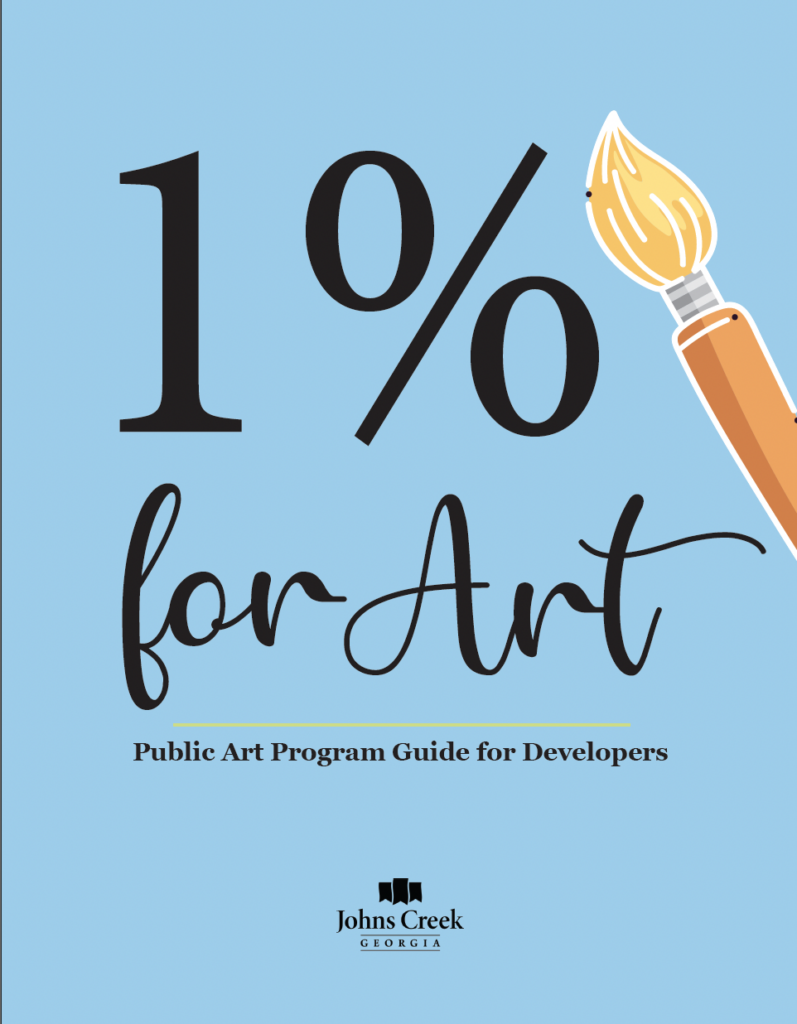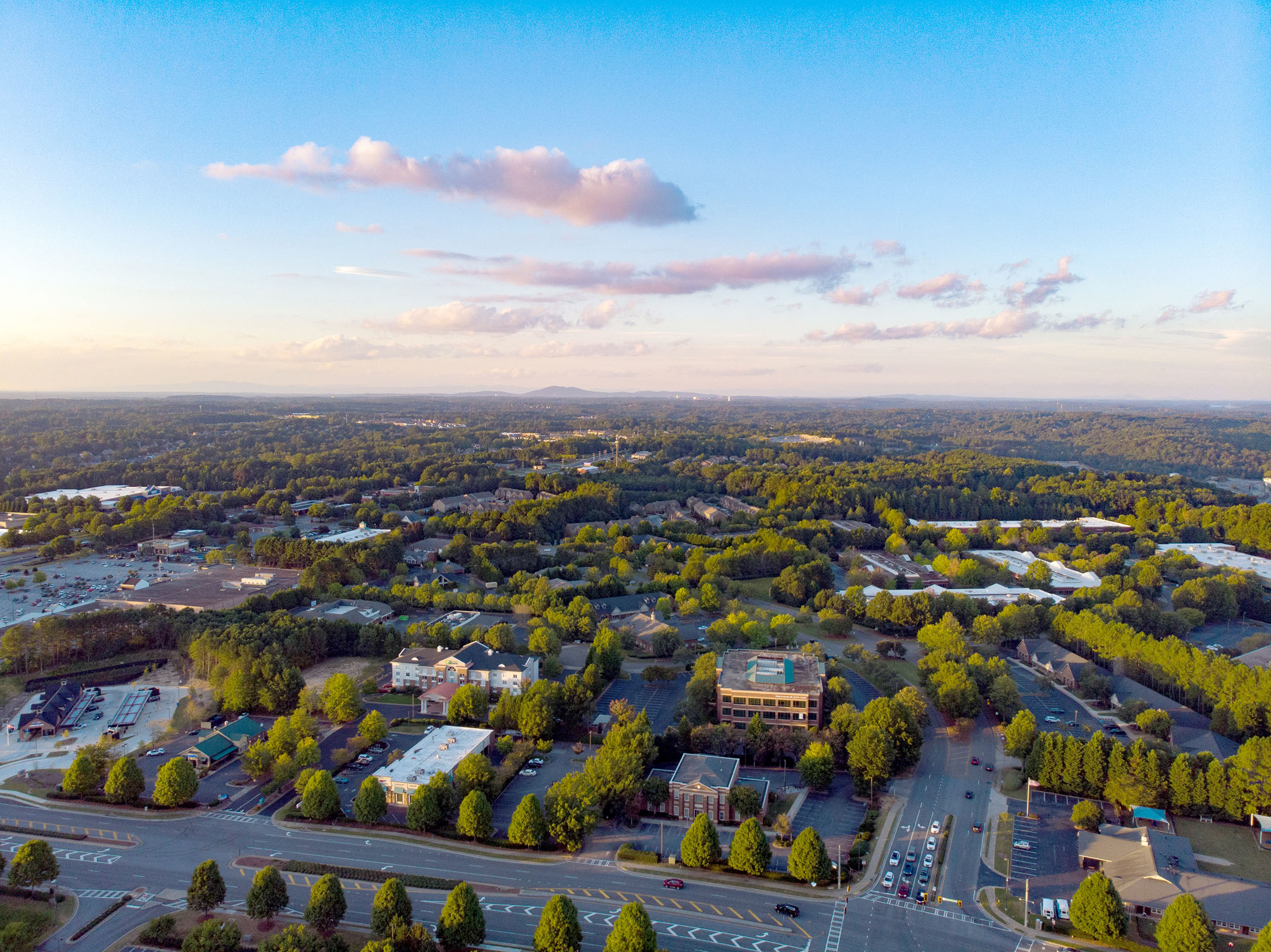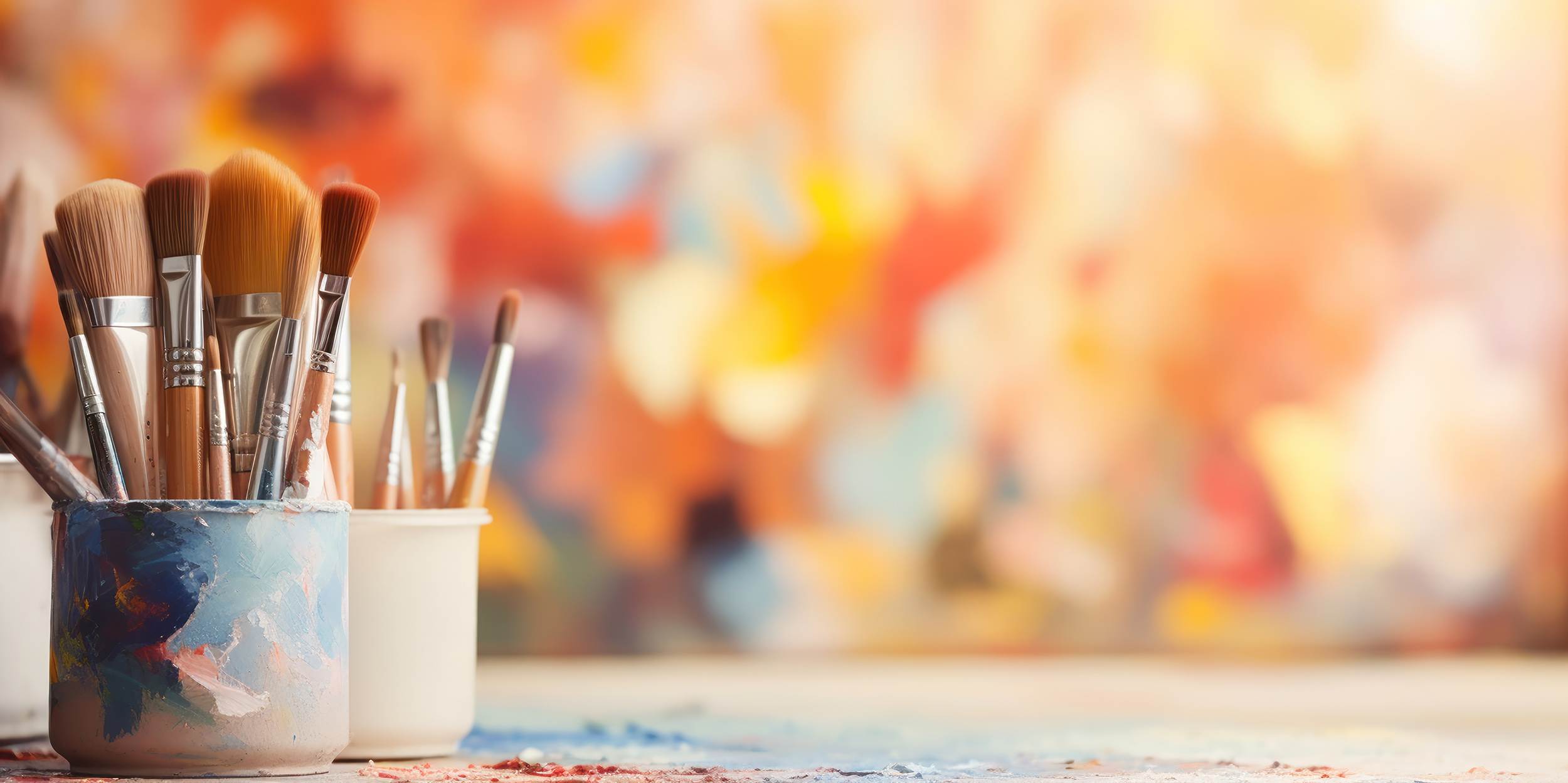
1% for Art Program
What is a 1% for Art program?
1% for Art Program seeks to aesthetically enhance Johns Creek and the environment, to enrich the lives of Johns Creek residents, and to encourage the installation of art as an economic driver by encouraging the voluntary installation of works of art where they are visible to the public, including private commercial development.
The program guidelines and criteria outlined call for public art projects to reflect the aesthetic, cultural diversity, and social values of the community.
What is Public Art?
Public Art includes original works of art that are accessible to the public and that may possess functional as well as aesthetic qualities; the art should reflect an awareness of the site, both physically and socially, and fit the historical and cultural values and sensibilities of the community.
The relationship of artwork and the site should be considered in terms of physical dimensions, social dynamics local character, and surrounding context of the site, existing or planned. Public art is not only meant to beautify spaces but also to inspire, provoke thought, and bring communities together by reflecting shared values or sparking dialogue.
Site specific installations of artwork may be functional, stand-alone, or integrated into the architecture of buildings in the form of gates, entryways, sitting areas, and walkways.
Why you should consider supporting public art in Johns Creek
The City’s parks, trails and sidewalks, numerous events, high architectural standards, and exceptional public safety are examples of the community’s commitment to maintaining a high quality of life. The City’s growth and its numerous national rankings as one of the country’s best places to live are proof of the success of this formula.
Public art also enhances our community’s quality of life, contributing to the livability and character, enhancing the visual quality of the built environment, and raises and preserves property values. The quality and desirability of a community is often reflected in public art pieces that are integrated into commercial and residential developments as well as in parks and along rights-of-way.
An effective public art program requires not only artists’ creativity, but also a community’s commitment and teamwork, including local government, non-profit organizations, and the private sector.
Considered Types of Art
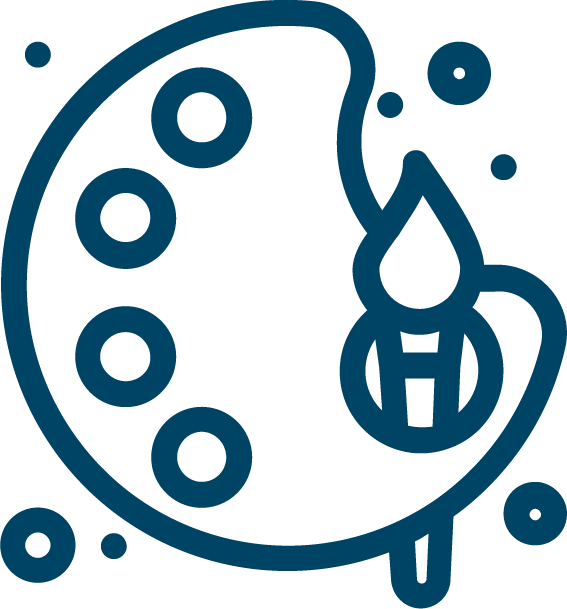
Murals

Natural Artwork

Sculptures
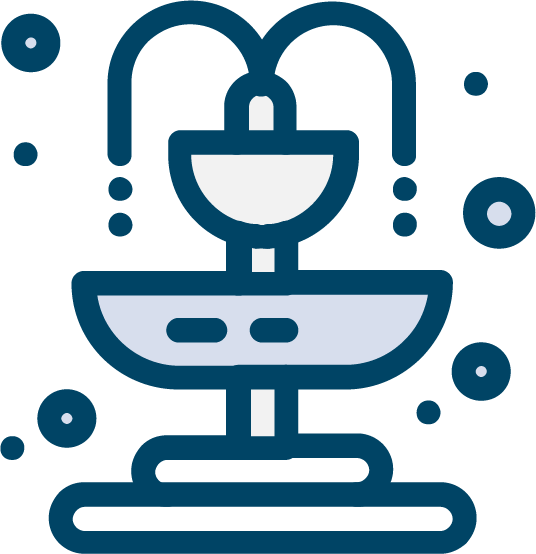
Unique Project Features
Not Considered Types of Art
Commercial Logos: Artwork primarily intended for business advertising, messaging, or that incorporates business logos.
Signage Art: Art intended primarily for signage purposes to announce, direct attention to, identify, advertise or communicate a message to the public for a business, product and/or service.
Directional Elements: Super-graphics, signage, or color coding, unless integral to the original art.
Mass-Produced Objects: Pre-manufactured items like standard fountains, statues, or playground equipment.
Mechanical Reproductions: Replicas of original artworks produced through mechanical or other reproduction methods.
Architectural Decorations: Ornamental or functional elements created by project architects rather than commissioned artists.
Utility Services: Electrical, water, or mechanical systems required to activate artworks.
Art Exhibitions and Educational Activities: Events or activities focused on art rather than the artworks themselves or temporary installations of art, designed to be rotated or changed on a regular basis.
How can I participate?
There are two primary ways to participate in the voluntary 1% for Art Program.
1. Install art on your commercial property.
OR 2. Contribute to the Public Art Fund.
1. Install art on your commercial property.
Private organizations may choose to spend the equivalent of 1% of construction costs or other amount on the acquisition and installation of public art on their commercial property. For public access and enjoyment, all works of public art located on private parcels should be installed outside of buildings and be visible or accessible from an adjacent public right-of-way or in an area where the public will have access.
The one percent of project cost figure would include, in addition to the actual art acquisition cost, art consultant fees; professional artist(s) fees; cost for design and/or fabrication of art including materials, insurance, permits, taxes, site preparation, pedestals, foundations, or other structures to support the artwork; delivery and installation charges; and signage such as an acknowledgment plaque to identify the artist, work, and development.
2. Public Art Fund Contribution
The Public Art Fund is an earmarked fund that will only be used towards the acquisition, commission, installation, or maintenance costs of public art pieces installed on City property. The Arts, Culture, and Entertainment Committee shall be the recommending body for the use of such funds, subject to the approval of City Council.
Both new commercial developments and existing businesses can contribute to the Public Art Fund by filling out the 1% for Art Participation Form through the City’s Customer Self-Service (CSS) Portal.
Evaluation Criteria
Type Art
The proposed artwork is on the list of types of art to be considered under the program.
Originality
The art is original, either a specially designed and commissioned piece or part of an artist’s limited collection.
Context / Location:
The desired art piece is cohesive with and/or relates to its proposed location (Examples: city culture, city history or the Johns Creek Community).
Accessibility
The proposed location for the art piece/installation is accessible to view by the public without fees or other barriers.
Public Safety
The proposed art piece/installation is not in a location which will pose threats to public safety (line of sight or site distance issues, blocking ADA compliant access, proximity to main road or thoroughfare, etc. (See GDOT Policy 667559)) nor are the construction or materials crafted in a way that could possibly cause injury (sharp edges, precarious fabrication, low quality materials, etc.).
Artist Qualifications
The selected artist meets at least two of the four following criteria:
a. The artist has completed other commissions on a similar scale.
b. The artist has received awards, grants, or fellowships.
c. The artist has placed work in private, corporate or museum collections.
d. The artist has participated at regional galleries or museums.
Appropriateness
The art is appropriate, in content and presentation, for the majority of potential viewers and the artwork does not violate the City’s definition of “obscene” as outlined in the Sign Ordinance.
Subject Matter
The art does not feature living persons; logos, mascots or advertisements; imagery or messaging showing bias or hate towards groups on the basis of race, color, religion, national origin, sexual orientation, gender, gender identity, physical or mental disability.
Submittal Process for New Commercial Development
During the Land Disturbance Permit (LDP) pre-application process, complete the 1% for Art Participation Form and choose how you would like to participate.
If donating to the Public Art Fund, visit the Customer Self-Service (CSS) Portal. Input the amount you wish to constribute and City staff will send you an invoice.
OR
If installing a piece of art, follow the next steps below.
- Complete the 1% for Art Installation LDP form in the Customer Self-Service (CSS) Portal. You will be asked to provide the following information about your art:
- Artist information and contact (may include a CV, portfolio of past projects, etc.)
- Artwork information to include type of art, description of the art piece, renderings, and cost estimate
- Location information to include site plan showing proposed location, and explanation of relevance of selected location
2. Internal staff review committee will review submissions according to evaluation criteria.
3. Feedback provided in tandem with other LDP comments (10 business days). If requested, resubmit documents.
4. Once approved, install your art project and share photos with the City.
Submittal Process for Existing Commercial Development
If an existing business would like to participate in the 1% for Art Program and install art pieces on their property, business owners are required to follow a similar submittal and review process, outlined below.
If donating to the Public Art Fund, visit the Customer Self-Service (CSS) Portal. Input the amount you wish to contribute and City staff will send you an invoice.
OR
If installing a piece of art, follow the next steps below.
1. Log into the City’s Customer Self-Service Portal.
2. If installing a piece of art, complete the 1% for Art Installation Business Form. You will be asked to provide the following info about your project:
- Artist information and contact (may include a CV, portfolio of past projects, etc.)
- Artwork information to include type of art, description of the art piece, renderings, and cost estimate
- Location information to include site plan showing proposed location, and explanation of relevance of selected location
- If you are not the property owner, provide a letter of permission from the property owner indicating approval to install the proposed art piece.
3. Internal staff review committee will review submissions according to evaluation criteria.
4. Feedback provided 15 business days. If necessary, resubmit up to three times for the same project.
5. Once approved, install your art project and share photos with the City.
Apply Today!
Log into the City of Johns Creek’s Customer Self-Service (CSS) Portal and get started on your 1% for Art application.
Need help identifying an artist?
View the list of artists who have been approved by the City of Johns Creek to participate in the 1% for Art program. Questions? Email OnePercentforArt@JohnsCreekGA.gov or call 678-512-3200.
Call for Artists
The City is creating an artist registry of approved artists whose work aligns with the 1% for Art Program. The registry is designed to serve as a database for business owners interested in installing art on their property to easily search and connect with artists who can create art that aligns with both the program and their vision.
We’re seeking artists who create:
- Murals (Paintings or mosaic works of art executed on a wall or other large flat surface)
- Sculptures (Freestanding, wall-mounted, or suspended three-dimensional forms made from durable materials suitable for the site and climate)
- Natural artwork (Interactive pieces or installations that utilize natural materials or special landscape treatments)
- Unique project features (Enhancements like benches, fountains, or shade structures designed and produced by a professional artist, which may be interactive or functional)
If you’re an artist who specializes in these types of work, we want to hear from you! Once approved, your info will be shared with businesses interested in purchasing or commissioning artwork for their new developments.
1% for Art Program Guide
